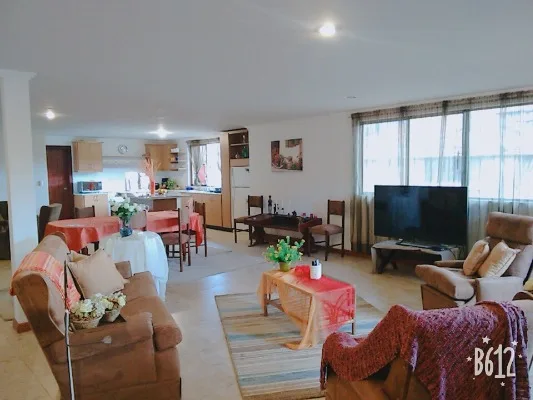Looking for a place in the country? Prices can be sky high or rock bottom
By Sylvan Hardy
Expat newcomers to Cuenca, and even old-timers, are often led to believe that there are limited options when it comes to finding affordable property in the country.
“When I moved here two years ago, everybody told me that the only places to look if you wanted a place out of town were Paute, Tarqui and Yunguilla,” says Dave Anderson. “This came from Cuencanos as well as gringos so I assumed it was accurate advice.”

A fertile valley overlooking Yunguilla.
The problem for Anderson, who wanted to buy three or four hectares for a garden and a house, was the cost of raw land in the preferred areas. A single hectare — about two-and-a-half acres — in the Yunguilla valley typically ranges between $70,000 and $120,000. Costs are similar in Paute. On average, prices drop 10% to 15% per hectare on purchases of parcels of up to five hectares.
Anderson, who comes from Arkansas, was shocked. “Back home, I could buy two or three acres in decent areas with road access and utilities for $15,000 or $20,000,” he said. “It seemed strange that in a place where most things cost a lot less, land would be so expensive.”
Real estate agents say there are several reasons why prices are high in the Ecuador sierra. “Much of it is not usable because of the mountains,” says agent Gustavo Jaramillo. “It is either too high or too steep or it doesn’t have access to utilities or roads.”
The key factor, he says, is popularity. Yunguilla, for instance, is where Cuencanos and a few gringos want to be and that fact elevates prices. In Paute, he says, a buyer is also paying for land that has high agricultural value.

The view from property just west of the continental divide, an hour’s drive south of Cuenca.
Jaramillo points out that prices can be significantly lower in less well-known areas, many of them with the same features and amenities that a buyer would find in Yunguilla or Paute. He admits, however, that most of his listings are in the popular areas.
Anderson and his friend, Ben Greene, found some of the off-the-beaten path bargains that Jaramillo is talking about. “It’s amazing, the difference in price for comparable property between Paute and Yunguilla, and places you haven’t heard about. The price differential for rural property is much more than in the U.S..” Greene said. “But to find the good stuff you have to do your own legwork. A real estate agent won’t take you there because it’s not worth his time.”
After months of searching, Greene bought ten hectares for $32,000 near Quingeo, 20 miles southeast of Cuenca. “In Yunguilla, I would have paid half a million for something not as nice as what I have.”

An organic farm in a rural community.
“It’s beautiful land that was close to electric lines and city water with a good road,” Greene said. “I have total peace here and love working in the garden. The weather’s great, my neighbors are great, and if I want, I can be in Cuenca in less than an hour.”
Ed and Tresa Konderla say they had no interest in owning property in the more popular out-of-town areas. “We’ve always been trailblazers and it’s no different for us in Ecuador than it was in Texas,” he said. The Konderla’s property, two valleys east of Yunguilla, offers stunning mountain views and, on a clear day, they can see the Pacific Ocean 50 miles to the west. They paid $16,000 for six-and-a-quarter hectares and Ed says he feels like he’s in paradise every day.
Close by the Konderla’s, there’s property at elevations ranging from 6,000 to 10,000 feet, that goes for $2,000 to $5,000 a hectare for parcels of up to 10 hectares.
Documentary filmmaker and college professor Curt Madison passed up 11 hectares for $35,000, 70 miles south of Cuenca, near Saraguro. Instead, he purchased a single hectare for $25,000 adjacent to a coffee hacienda. “It was a choice but I decided to pay more because I’m interested in growing coffee and being part of the hacienda’s project of working with the local farmers. This was a special situation,” he says. The coffee in the area is excellent quality, he says, and is being exported to the U.S.

An expat gardener’s Ecuador version of Green Acres, close to Cuenca.
Some of those interested in country property admit, however, they want to be around other expats and middle class Cuencanos in places such as Yunguilla. They say they are willing to pay the price for it. “I don’t want to be in an isolated area where no one speaks English,” says Trish Miller, who has a house on two hectares in Yunguilla as well as a condo in Cuenca. “Many of the Cuencanos who have homes in Yunguilla speak English and they are very friendly with expats,” she says.
Anderson and Ed Konderla say that it pays to for buyers to take their time and explore the countryside. “A lot of people who are new to Cuenca want to buy something quick and that’s a mistake,” Anderson says. “You’ll get a lot of advice and most of it is from people who have something to sell or haven’t done any research. There’s a definite follow-the-leader mentality among gringos and you need to strike out on your own to find the best places and best deals,” he says. He adds that unless the foreign buyer is a skilled negotiator, it’s a good idea to have an Ecuadorian friend interact with the seller.





















